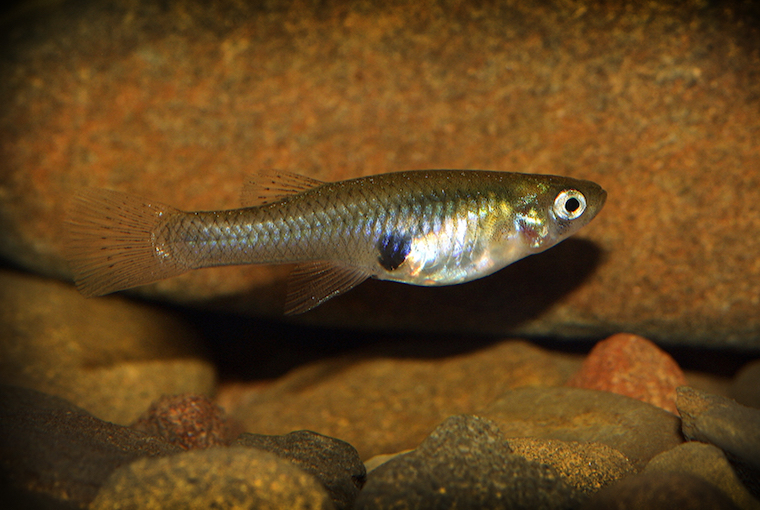New invasive species designated – Ontario OUT of DOORS
Ten new restricted and prohibited species will probably be added to Ontario’s Invasive Species Act as of January 1.
The transfer, which goals to assist stop, management, and scale back the unfold of dangerous invaders, additionally consists of 4 teams of comparable species.
“Invasive species harm our ecosystems, influence our potential to get pleasure from out of doors actions and hurt our financial system by threatening the forestry and agriculture sectors,” Minister of Pure Assets and Forestry Graydon Smith said on Dec. 11. “That’s why we’re taking motion to limit these invasive species to guard Ontario’s financial system and ecosystems.”
Fish, vegetation, invertebrates included
Examples of recent species that can now be prohibited embrace sure fish, aquatic vegetation, and invertebrates, whereas restrictions can even be positioned on teams of recent aquatic and terrestrial vegetation.
The addition, first introduced earlier this yr, was lauded by teams together with the Ontario Federation of Anglers and Hunters (OFAH).
“The OFAH and its Invading Species Consciousness Program are happy to see the addition of 10 new prohibited and restricted species beneath the Invasive Species Act,” Govt Director Angelo Lombardo said. “With over 30 years of collaboration with the province, we are going to proceed to assist their targets of stopping the introduction and unfold of invasive species in Ontario.”
For prohibited species, it’s unlawful to import, possess, deposit, launch, transport, propagate (breed/develop), purchase, promote, lease or commerce these invasive species.
For restricted species, it’s unlawful to deposit or launch restricted invasive species in Ontario and can’t be introduced right into a provincial park or conservation reserve.
What’s prohibited
Ide (fish)
Potential impacts: introduce parasites, virus, and illness transmission, and compete with native fishes.
Japanese and western mosquito fishes (fish)
Potential impacts: outcompete native fish species for meals and habitat via aggressive feeding of zooplankton, eggs, and larvae, resulting in the lack of biodiversity and potential lack of some native species in Ontario.
Crimson shiner (fish)
Potential impacts: scale back native fish populations via predation on eggs and larvae, genetic impacts via hybridization, and introduction of parasites.
Oxygen weed (aquatic plant)
Potential impacts: dense colonies outcompete native vegetation, adversely have an effect on water high quality, and impede leisure actions resembling boating and swimming.
Nutria (mammal)
Potential impacts: burrowing and foraging behaviour impacts agricultural areas and will increase flooding dangers, unfold parasites and illness to people, pets and livestock, and might destroy coastal wetlands.
Genus salvinia (Watermoss – aquatic plant)
Potential impacts: dense colonies outcompete native vegetation, adversely have an effect on water high quality and impede leisure actions resembling boating and swimming.
Genus procambarus and genus pacifastacus (Crayfish)
Potential impacts: compete with native crayfish and fish species for meals and shelter.
What’s restricted
Eurasian water-milfoil (aquatic plant)
Potential impacts: outcompete native vegetation, adversely have an effect on water high quality, impede leisure actions and create habitat for mosquitoes.
Floating primrose-willow (aquatic plant)
Potential impacts: dense colonies outcompete native vegetation, adversely have an effect on water high quality, and impedes leisure actions resembling boating and swimming.
Flowering-rush (aquatic plant)
Potential impacts: can displace native riparian vegetation, kinds dense stands which influence industrial and leisure makes use of of shallow waters, and reduces habitat of native fish and will increase habitat for invasive fish.
Tree-of-heaven (terrestrial plant)
Potential impacts: modifications chemical and microbial exercise in soils, reduces soil vitamins, displace native plant species, related to a number of fungal pathogens and the popular host to the noticed lanternfly (Lycorma delicatula).
Genus azolla (Water ferns – aquatic plant)
Potential impacts: dense colonies outcompete native vegetation, adversely have an effect on water high quality, impedes leisure actions resembling boating and swimming, and negatively have an effect on wild rice populations.
The post New invasive species designated – Ontario OUT of DOORS appeared first on Havens travel and tour blog .




